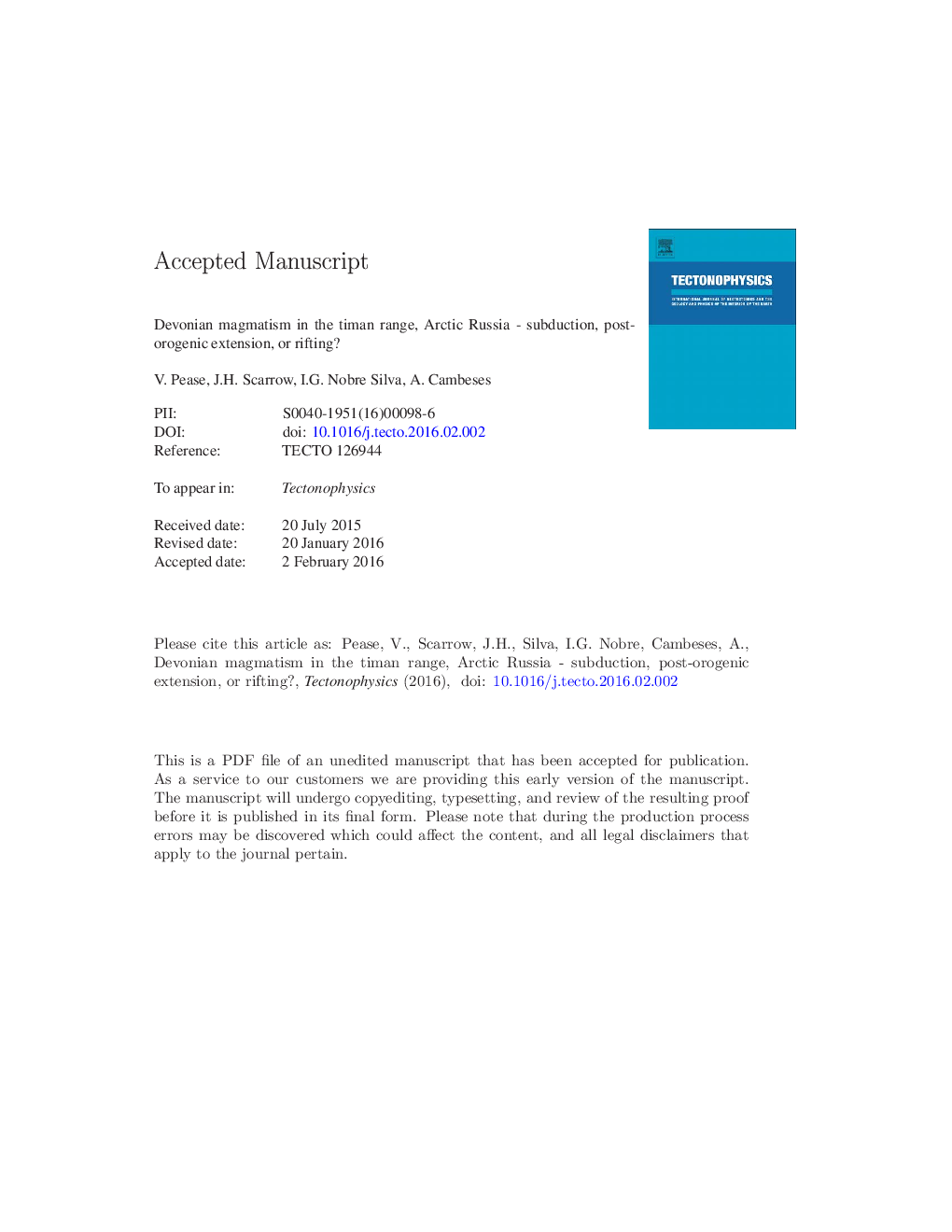| Article ID | Journal | Published Year | Pages | File Type |
|---|---|---|---|---|
| 5781794 | Tectonophysics | 2016 | 45 Pages |
Abstract
Devonian mafic magmatism of the northern East European Craton (EEC) has been variously linked to Uralian subduction, post-orogenic extension associated with Caledonian collision, and rifting. New elemental and isotopic analyses of Devonian basalts from the Timan Range and Kanin Peninsula, Russia, in the northern EEC constrain magma genesis, mantle source(s) and the tectonic process(es) associated with this Devonian volcanism to a rift-related context. Two compositional groups of low-K2O tholeiitic basalts are recognized. On the basis of Th concentrations, LREE concentrations, and (LREE/HREE)N, the data suggest two distinct magma batches. Incompatible trace elements ratios (e.g., Th/Yb, Nb/Th, Nb/La) together with Nd and Pb isotopes indicate involvement of an NMORB to EMORB 'transitional' mantle component mixed with variable amounts of a continental component. The magmas were derived from a source that developed high (U,Th)/Pb, U/Th and Sm/Nd over time. The geochemistry of Timan-Kanin basalts supports the hypothesis that the genesis of Devonian basaltic magmatism in the region resulted from local melting of transitional mantle and lower crust during rifting of a mainly non-volcanic continental rifted margin.
Related Topics
Physical Sciences and Engineering
Earth and Planetary Sciences
Earth-Surface Processes
Authors
V. Pease, J.H. Scarrow, I.G. Nobre Silva, A. Cambeses,
